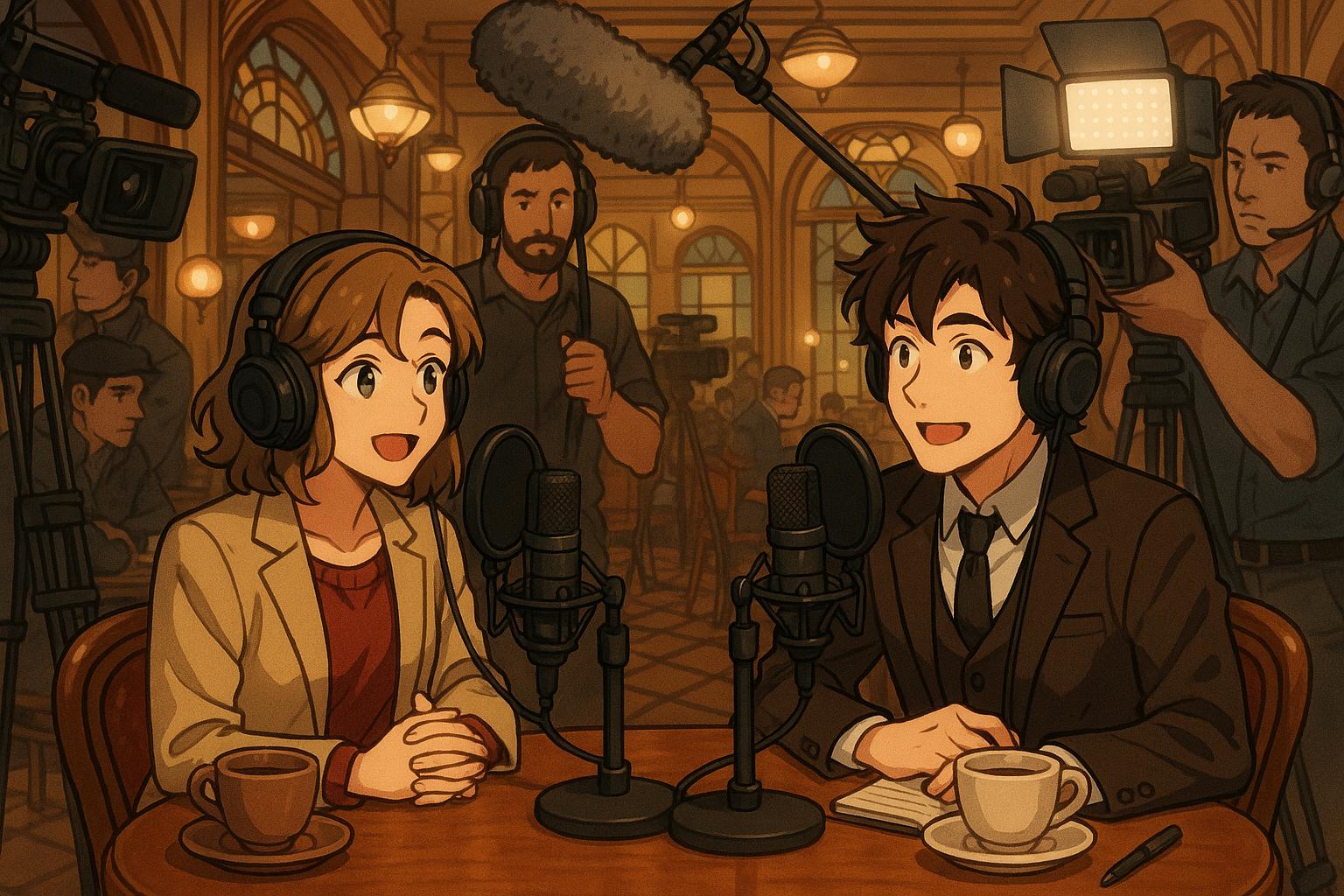At Pellicci’s, a cherished family café on Bethnal Green Road in London, the aroma of freshly cooked fry-ups fills the air, reminiscent of its 125-year heritage. The establishment is run by spirited British-Italian siblings, Nevio and Anna, who have built a reputation not only for their hearty meals but also for the podcast series "Down the Caff." Here, over dishes that guests select, they delve into candid and often chaotic conversations with a diverse range of personalities, from actor Ray Winstone to TikTok star Big John. Today, the duo is preparing to record a new episode while navigating the demands of a film crew, a sign of a growing trend in the podcasting world where audiovisual experiences are becoming the norm.
In recent years, the podcasting landscape has experienced a seismic shift, with a marked increase in video content, popularly termed “vodcasts.” This evolution is underscored by YouTube announcing it has hit 1 billion monthly users consuming podcast content. This statistic positions YouTube ahead of Spotify and Apple Podcasts, both of which have been cornerstones of the audio-only podcasting sphere. Spotify, aiming to reclaim its standing, has started releasing its leading shows, including "The Joe Rogan Experience," in video formats.
The BBC has also joined this movement, launching video iterations of its series like "The Traitors: Uncloaked." Concurrently, other platforms, including Netflix, are exploring similar ventures into visualised podcasting. In line with this burgeoning trend, the British Podcast Awards has introduced a "visual innovation" category, highlighting the increasing significance of video content in the podcast medium.
However, opinions on the shift towards video are mixed. While many listeners appreciate the novelty of watching their favourite podcasters, a considerable number of traditional audiophiles question the need for visual elements when their focus is already stretched thin across various media. For instance, one critic remarked that the true essence of audio lies in its ability to provide an intimate experience, one that facilitates multi-tasking rather than demanding uninterrupted attention. This viewpoint resonates with many, including industry professionals who worry that the quality of audio content might decline as creators dabble in a visually-driven format.
Notwithstanding these concerns, the producers of "Down the Caff" argue for the unique value their visual presentation brings. The show's creator, George Sexton-Kerr, initially envisioned it as an audiovisual package that embraces the café's rich atmosphere. He explained that the charm of the setting, with its grade II-listed art deco design, adds a layer of authenticity that enriches the viewers' experience. Nevio acknowledged their learning curve, admitting that initial episodes featured chaotic exchanges, but they've refined their approach under Sexton-Kerr’s guidance.
This evolution is not limited to interview-style podcasts. Some creators, like George Mpanga (aka George the Poet) and collaborator Benbrick, who have successfully crafted audio narratives, are now revisiting their works to adapt them for video. They view this transformation as essential, recognising the dominance of platforms like YouTube, where a substantial proportion of podcast discovery now occurs. Insights from recent surveys reveal that almost half of podcast listeners prefer video content, with YouTube emerging as the favoured platform for many.
Indeed, despite the apprehensions of traditionalists, many industry experts see video as an essential tool for podcasters looking to expand their audience. Producing visually engaging clips for social media not only boosts visibility but can significantly increase listener subscriptions. As Matt Deegan from Podcast Discovery pointed out, engaging visuals, whether silly or serious, compel potential listeners to hit 'Follow' on their podcast app. The technique of posting bite-sized video clips on platforms like Instagram and TikTok has proven effective, with "Down the Caff" reportedly seeing substantial viewership through this strategy.
Ultimately, as the lines between audio and visual content continue to blur, it remains to be seen whether traditional audio podcasts will be overshadowed by their flashier counterparts. Yet, as Sexton-Kerr suggested, like the enduring anthem "Video Killed the Radio Star," the fundamental charm of audio will likely persist, co-existing with its visual counterpart. For now, the café at Pellicci’s stands as a testament to the artistry of conversation—whether heard or seen—and the enduring allure of genuine human connection in an ever-evolving media landscape.
Reference Map:
- Paragraph 1 – [1], [2]
- Paragraph 2 – [2], [3], [4]
- Paragraph 3 – [5], [6]
- Paragraph 4 – [1], [2]
- Paragraph 5 – [3], [4], [6]
- Paragraph 6 – [7]
- Paragraph 7 – [1], [6]
- Paragraph 8 – [5], [3]
- Paragraph 9 – [2], [6]
Source: Noah Wire Services
